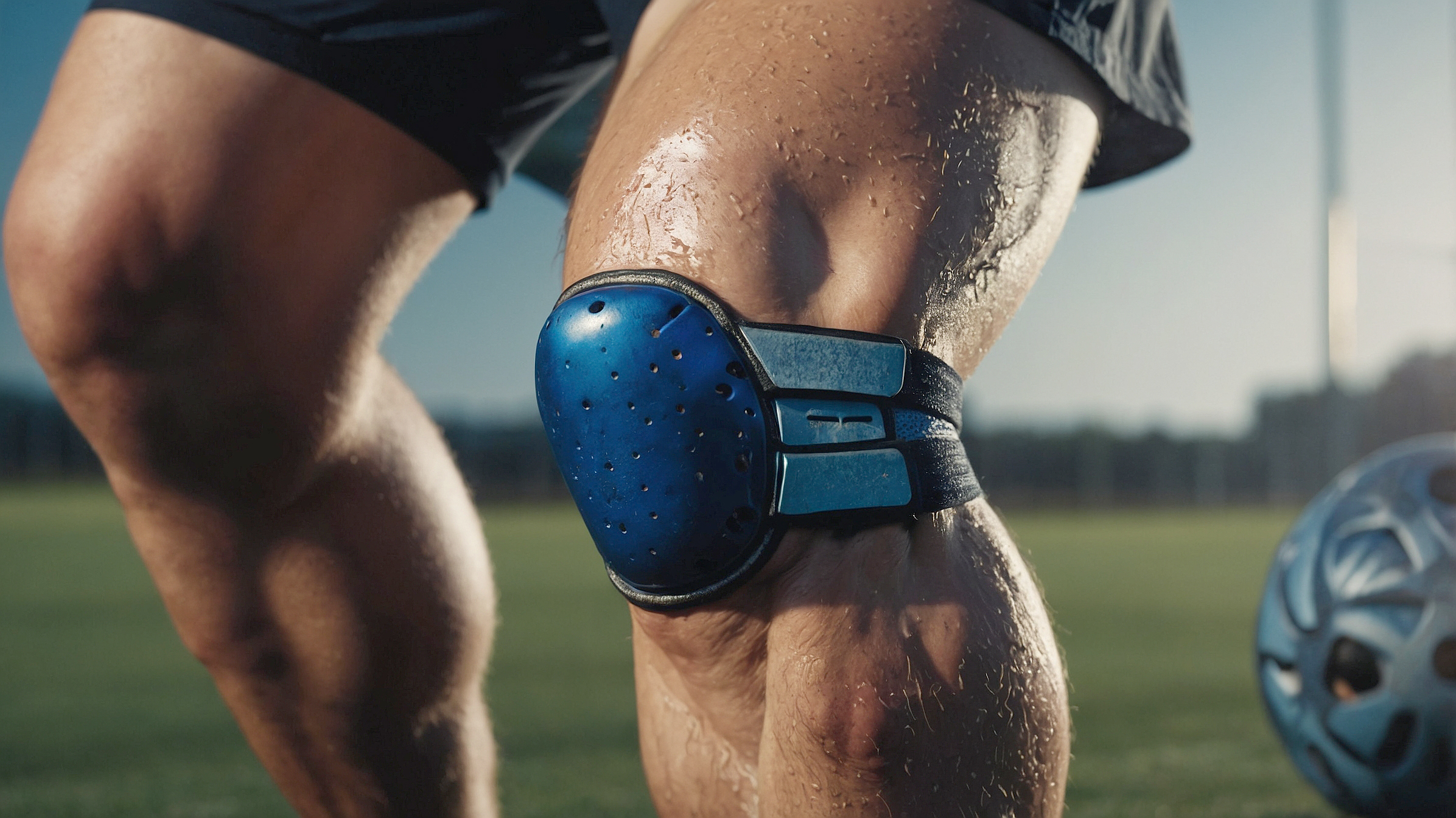EXCEL > ACL REPAIR AND PROTECTION

ACL Repair, Rehabilitation, and Prevention: Securing Your Athletic Future
What is the ACL?
The Anterior Cruciate Ligament (ACL) is a vital structure within the knee joint. This strong band of tissue connects the femur (thighbone) to the tibia (shinbone), playing a crucial role in knee stability. The ACL prevents the tibia from sliding too far forward relative to the femur and provides rotational stability to the knee. This ligament is essential for the quick stops, changes in direction, and pivoting movements that are common in many sports.
How do ACL Injuries Occur?
ACL injuries typically happen during athletic activities that involve sudden stops, changes in direction, pivoting with a firmly planted foot, or incorrect landings from jumps. These movements can put excessive stress on the ligament, causing it to stretch or tear. Direct contact to the knee, such as during a tackle in football, can also lead to ACL injuries. Certain factors increase the risk of ACL injuries, including participation in high-risk sports like soccer, basketball, and football. Notably, female athletes face a two to eight times higher risk of ACL injury compared to their male counterparts, due to differences in anatomy, hormones, and neuromuscular control.
Recognizing an ACL Injury
Athletes who suffer an ACL injury often report hearing or feeling a distinctive “pop” in their knee at the moment of injury. This is typically followed by severe pain and an inability to continue the activity. Rapid swelling of the knee is common, and athletes may experience a loss of range of motion. Many describe a feeling of instability or the knee “giving way” when trying to bear weight. If you suspect an ACL injury, it’s crucial to seek immediate medical attention for proper diagnosis and treatment.
Diagnosing and Treating ACL Injuries
Diagnosing an ACL injury usually involves a combination of physical examination and imaging studies. A healthcare provider will assess the knee’s stability and range of motion. An MRI scan is often used to confirm the diagnosis and check for any associated injuries. X-rays may also be taken to rule out fractures. Treatment options depend on the severity of the injury, the patient’s activity level, and their goals. For partial tears or less active individuals, non-surgical treatment involving physical therapy, bracing, and lifestyle modifications might be sufficient. However, for complete tears, especially in athletes who wish to return to high-level sports, surgical reconstruction is often recommended.
Understanding ACL Reconstruction Surgery
ACL reconstruction is typically performed as an outpatient arthroscopic procedure. During the surgery, the torn ACL is replaced with a graft, which can be taken from the patient’s own body (autograft) or from a donor (allograft). Common graft sources include the patellar tendon, hamstring tendon, or quadriceps tendon. The procedure usually takes one to two hours, and most patients can go home the same day. The choice of graft and specific surgical technique may vary based on the surgeon’s preference and the patient’s individual needs.
The Journey of Rehabilitation
Rehabilitation after ACL reconstruction is a lengthy process, typically lasting 9-12 months before an athlete can return to full sports participation. The early phases focus on controlling pain and swelling, protecting the graft, and gradually restoring range of motion. As healing progresses, the focus shifts to strengthening exercises, balance and proprioception training, and eventually sport-specific activities. Throughout the process, emphasis is placed on proper movement patterns to reduce the risk of re-injury. The final phases include agility training, plyometrics, and psychological preparation for returning to sport. It’s important to note that return-to-play decisions are based on functional testing and readiness, not just time since surgery.
The Crucial Role of Proper Training
Proper training is essential not only for recovering from an ACL injury but also for preventing initial and repeat injuries. A comprehensive training program should include neuromuscular training to improve coordination and teach proper landing and cutting techniques. Strength training focusing on the lower body and core is crucial for joint stability and addressing muscle imbalances. Flexibility and mobility work ensure optimal range of motion, while plyometric exercises improve power and landing mechanics. Sport-specific agility training prepares athletes for the unique demands of their sport. Equally important is allowing for adequate recovery and rest to prevent overuse injuries.
Long-term Outlook and Returning to Sport
With proper rehabilitation and training, many athletes successfully return to their sport after ACL reconstruction. However, it’s important to understand that the risk of re-injury is highest in the first two years after returning to sport. Continued adherence to prevention programs is crucial for long-term success. The decision to return to sport should be based on meeting specific criteria, including full range of motion, near-equal strength in both legs, successful completion of sport-specific drills, and psychological readiness. It’s not just about physical recovery – mental preparation and confidence are equally important for a successful return to competitive athletics.
How Sports Performance Institutes Can Help
Sports Performance Institutes play a vital role in both preventing ACL injuries and supporting athletes through the rehabilitation process. These specialized facilities offer comprehensive injury prevention programs based on the latest research and techniques. They provide state-of-the-art biomechanical assessments to identify risk factors and movement patterns that may predispose an athlete to injury. By delivering personalized training and rehabilitation plans, they ensure that each athlete receives the specific support they need. Moreover, these institutes serve as educational resources, helping athletes, coaches, and parents understand the importance of injury prevention and proper training techniques.
Engaging with a Sports Performance Institute gives athletes access to expert guidance and cutting-edge techniques that can significantly reduce their risk of ACL injury and optimize their overall athletic performance. By investing in proper training and injury prevention, athletes are essentially investing in their athletic future. Stay proactive, stay informed, and stay in the game – your athletic career depends on it.
